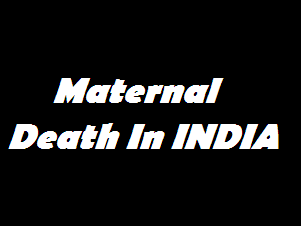- Home
- Medical news & Guidelines
- Anesthesiology
- Cardiology and CTVS
- Critical Care
- Dentistry
- Dermatology
- Diabetes and Endocrinology
- ENT
- Gastroenterology
- Medicine
- Nephrology
- Neurology
- Obstretics-Gynaecology
- Oncology
- Ophthalmology
- Orthopaedics
- Pediatrics-Neonatology
- Psychiatry
- Pulmonology
- Radiology
- Surgery
- Urology
- Laboratory Medicine
- Diet
- Nursing
- Paramedical
- Physiotherapy
- Health news
- Fact Check
- Bone Health Fact Check
- Brain Health Fact Check
- Cancer Related Fact Check
- Child Care Fact Check
- Dental and oral health fact check
- Diabetes and metabolic health fact check
- Diet and Nutrition Fact Check
- Eye and ENT Care Fact Check
- Fitness fact check
- Gut health fact check
- Heart health fact check
- Kidney health fact check
- Medical education fact check
- Men's health fact check
- Respiratory fact check
- Skin and hair care fact check
- Vaccine and Immunization fact check
- Women's health fact check
- AYUSH
- State News
- Andaman and Nicobar Islands
- Andhra Pradesh
- Arunachal Pradesh
- Assam
- Bihar
- Chandigarh
- Chattisgarh
- Dadra and Nagar Haveli
- Daman and Diu
- Delhi
- Goa
- Gujarat
- Haryana
- Himachal Pradesh
- Jammu & Kashmir
- Jharkhand
- Karnataka
- Kerala
- Ladakh
- Lakshadweep
- Madhya Pradesh
- Maharashtra
- Manipur
- Meghalaya
- Mizoram
- Nagaland
- Odisha
- Puducherry
- Punjab
- Rajasthan
- Sikkim
- Tamil Nadu
- Telangana
- Tripura
- Uttar Pradesh
- Uttrakhand
- West Bengal
- Medical Education
- Industry
Janani Suraksha Yojana in India- Review

A programme being implemented in India to promote institutional delivery among poor pregnant women has not reduced maternal deaths as much, especially in poor areas, new research has found.
The programme that provides monetary incentives for women to give birth in health facilities instead of at home was launched in 2005.
The so called Janani Suraksha Yojana (JSY) programme successfully increased births at facilities, but due to its implementation in a fragile health system context, it has been less effective at reducing fatalities, the study said.
"The cash transfer programmes are by themselves inadequate to improve health outcomes," said researcher Bharat Randive from Umea University in Sweden.
"While the programme can improve service utilisation, it will not reduce maternal and neo-natal deaths unless the socioeconomic inequalities in access to facility-based care are also addressed and the care is of good quality," Randive noted in an official statement.
"Emergency obstetric care, which is essential to save lives of pregnant women and babies, is grossly unavailable at public facilities in the poor states of India that form a global hotspot for avoidable maternal deaths," Randive pointed out in his research conducted for his doctoral dissertation.
In his research, Randive looked at nine Indian states and compared access to care and health outcomes in rich and poor areas.
The poor areas of these nine less developed states had 135 more maternal deaths for every 100,000 births and the decline in maternal deaths during the programme in these areas was four times slower than in the rich areas, the study found.
"In five years, institutional births increased significantly from a pre-programme average of 20 percent to 49 percent. However, no significant association between district-level institutional birth proportions and maternal mortality rate was found," the study said.
The programme that provides monetary incentives for women to give birth in health facilities instead of at home was launched in 2005.
The so called Janani Suraksha Yojana (JSY) programme successfully increased births at facilities, but due to its implementation in a fragile health system context, it has been less effective at reducing fatalities, the study said.
"The cash transfer programmes are by themselves inadequate to improve health outcomes," said researcher Bharat Randive from Umea University in Sweden.
"While the programme can improve service utilisation, it will not reduce maternal and neo-natal deaths unless the socioeconomic inequalities in access to facility-based care are also addressed and the care is of good quality," Randive noted in an official statement.
"Emergency obstetric care, which is essential to save lives of pregnant women and babies, is grossly unavailable at public facilities in the poor states of India that form a global hotspot for avoidable maternal deaths," Randive pointed out in his research conducted for his doctoral dissertation.
In his research, Randive looked at nine Indian states and compared access to care and health outcomes in rich and poor areas.
The poor areas of these nine less developed states had 135 more maternal deaths for every 100,000 births and the decline in maternal deaths during the programme in these areas was four times slower than in the rich areas, the study found.
"In five years, institutional births increased significantly from a pre-programme average of 20 percent to 49 percent. However, no significant association between district-level institutional birth proportions and maternal mortality rate was found," the study said.
Next Story


